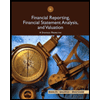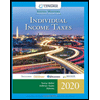
Discuss the two reasons most commonly advanced for excluding items from income with examples, and also explain the manner in which the purpose of exclusion is accomplished by them.
Explanation of Solution
For excluding items from income, encouraging taxpayers to engage in transactions for which relief is provided, and alleviating the effects of double
The example of the exclusions that encourage taxpayers to engage in specific transactions is that individuals are encouraged to purchase medical insurance, as all the payments received from the purchased medical insurance policies are excluded. The taxpayers are encouraged to invest in securities versus taxable investments, as the interest received on municipal bonds are excluded.
The examples of the exclusions that avoid double taxation are the exclusion of the foreign earned income. The income earned in foreign countries are prevented from being taxed in the Country U and also in the foreign country. Double taxation is prevented by the gift and estate tax, and income tax for the property received by inheritance or gift.
Want to see more full solutions like this?
Chapter 4 Solutions
CONCEPTS IN FED.TAX.,2020-W/ACCESS
- I need help finding the accurate solution to this general accounting problem with valid methods.arrow_forwardI need assistance with this general accounting question using appropriate principles.arrow_forwardCan you help me solve this general accounting problem using the correct accounting process?arrow_forward
- Please provide the accurate answer to this general accounting problem using valid techniques.arrow_forwardWalnut Corporation produces a product that sells for $78.00. Fixed costs are $325,000, and variable costs are $32.00 per unit. Walnut can buy a new production machine that will increase fixed costs by $18,500 per year but will decrease variable costs by $5.50 per unit. Compute the contribution margin per unit if the machine is purchased. a) $46.00 b) $48.50 c) $51.50 d) $52.00 e) $54.00arrow_forwardPlease provide the solution to this general accounting question with accurate financial calculations.arrow_forward
 Managerial Accounting: The Cornerstone of Busines...AccountingISBN:9781337115773Author:Maryanne M. Mowen, Don R. Hansen, Dan L. HeitgerPublisher:Cengage Learning
Managerial Accounting: The Cornerstone of Busines...AccountingISBN:9781337115773Author:Maryanne M. Mowen, Don R. Hansen, Dan L. HeitgerPublisher:Cengage Learning Financial Reporting, Financial Statement Analysis...FinanceISBN:9781285190907Author:James M. Wahlen, Stephen P. Baginski, Mark BradshawPublisher:Cengage Learning
Financial Reporting, Financial Statement Analysis...FinanceISBN:9781285190907Author:James M. Wahlen, Stephen P. Baginski, Mark BradshawPublisher:Cengage Learning Individual Income TaxesAccountingISBN:9780357109731Author:HoffmanPublisher:CENGAGE LEARNING - CONSIGNMENT
Individual Income TaxesAccountingISBN:9780357109731Author:HoffmanPublisher:CENGAGE LEARNING - CONSIGNMENT





